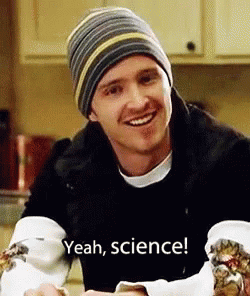Bullet Club
Banned
Sperm is being used to create an eco-friendly alternative to plastic

A new eco-friendly plastic made from salmon sperm has been invented by scientists in China.
Two short strands of DNA from the sperm were combined with a chemical from vegetable oil that binds them together. What this creates is a squishy material known as hydrogel.
From here the gel is then moulded into different shapes and freeze-dried to remove the moisture, which makes it solidify. Researchers have already created a cup, puzzle pieces and a DNA molecule from the eco-friendly plastic.
Though the team of Chinese scientists created their raw materials from salmon sperm, DNA carries the genetic code for every living thing on Earth. A study from 2015 estimates that there are around 50 billion tonnes of DNA on the planet.
That means we could technically make the plastic out of other sustainable sources such as waste material from crops, algae or bacteria.
Is this plastic better than other alternatives?
Plastic is a big problem for the environment as it is made from petrochemicals that require a lot of heat and toxic substances to manufacture. It also takes centuries to break down and very little is recycled - with most ending up incinerated or sent to landfill.For that reason, a lot of research has been done to find alternatives which are less damaging to our natural environment.
Biodegradable plastics have already been created using materials like cornstarch and algae, but they require a lot of energy to make and can be difficult to recycle.
Dayong Yang and his team at Tianjin University wanted to create a material that solved these problems.
The creation of DNA-based plastic produces 97 per cent fewer carbon emissions than polystyrene plastics, they say. Dipping items created from the material into water turns them back into a gel that can be reformed into new objects meaning it is easy to recycle too. The plastic can be broken down by DNA digesting enzymes if it is no longer needed.
But the new material does have some limitations.
The fact that it can be recycled using water alone means that it would need to be kept dry. While waterproof coatings could be added, this would make it more difficult to recycle.
It could, however, be used for items like electronics that need to be kept dry anyway and some forms of packaging, the researchers believe.
Source: Euronews Green

The bottle tastes a bit jizzy.
Last edited:














